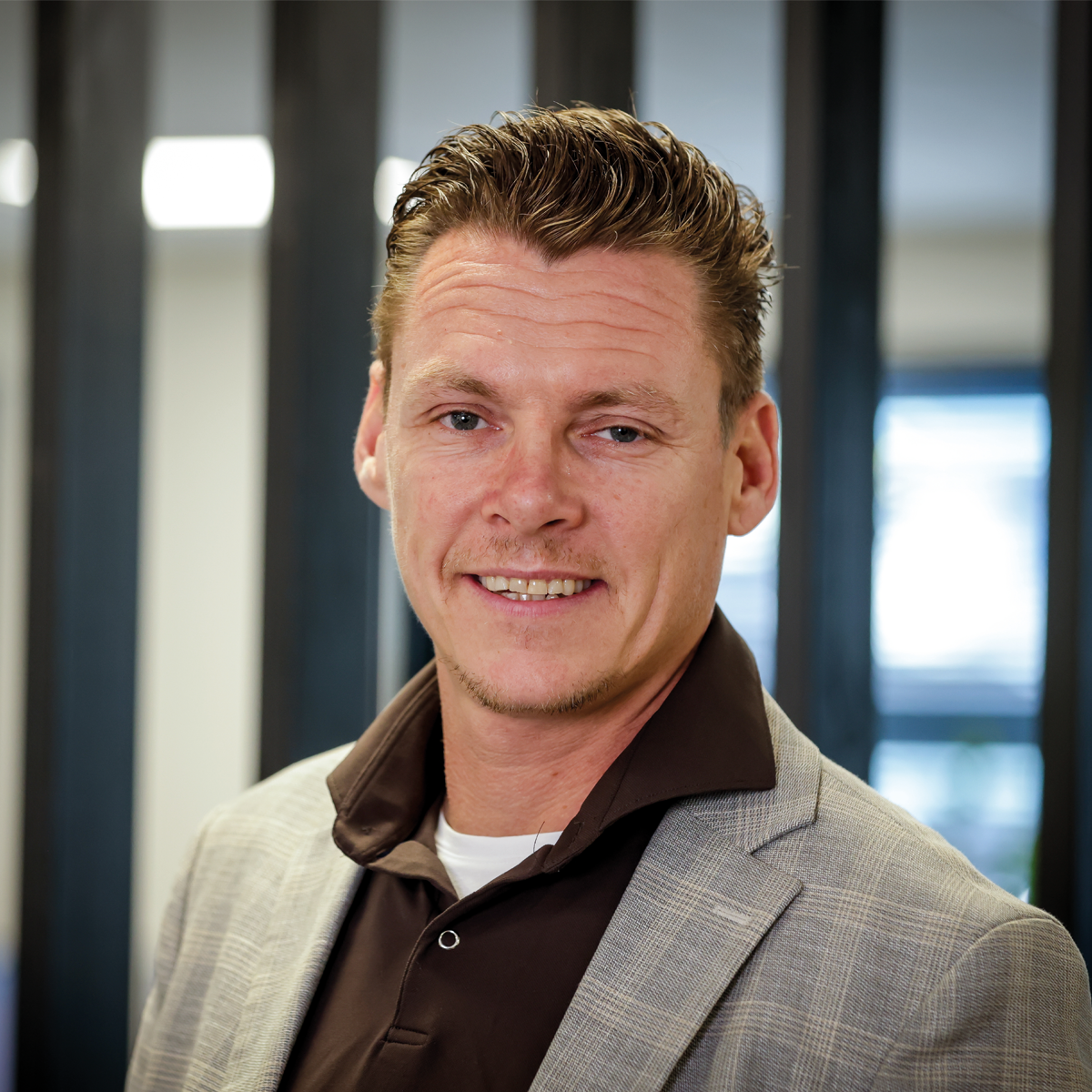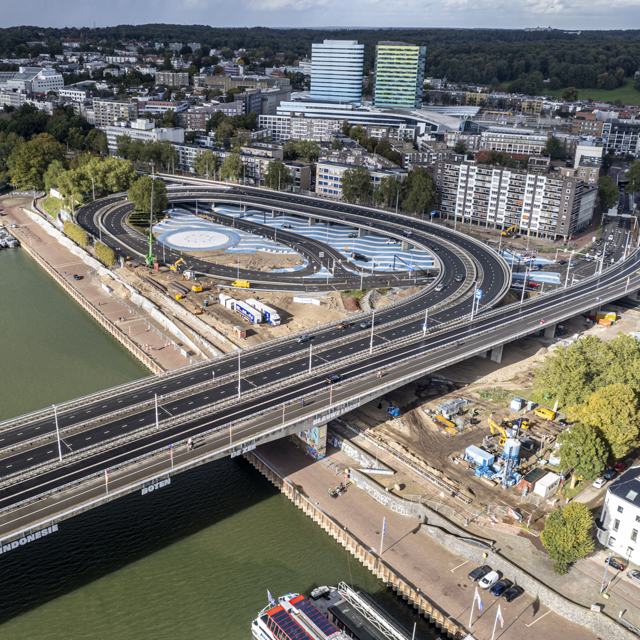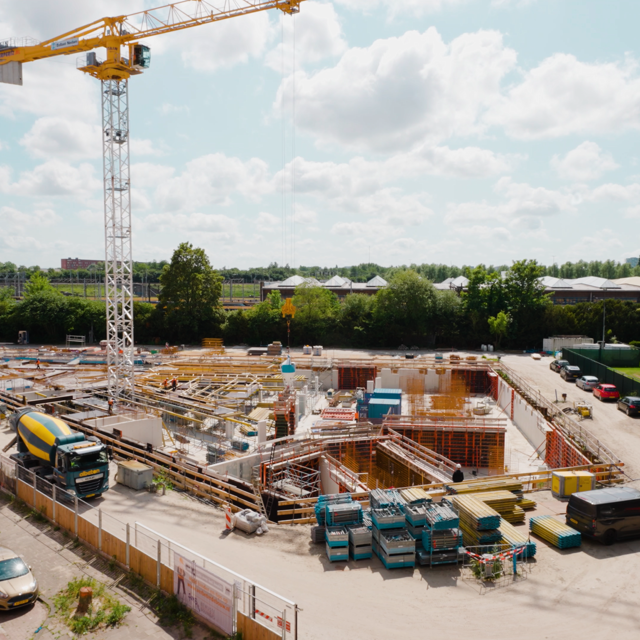The power of electric equipment
A zero-emission fleet and CO₂-neutral construction
sites for the Dutch business units by 2030. These are Ballast Nedam’s most important sustainability goals. In 2024, further investments were therefore made in the purchase of electric equipment. How is that working out, and what does it deliver?
The pace is also going strong for the other objective. Between 2021 and 2024, a CO₂ reduction of three million kilograms was achieved on construction sites using electric equipment. ‘For the next three years, an investment amount has been set aside that should lead to a savings of fourteen million kilograms of CO₂.’
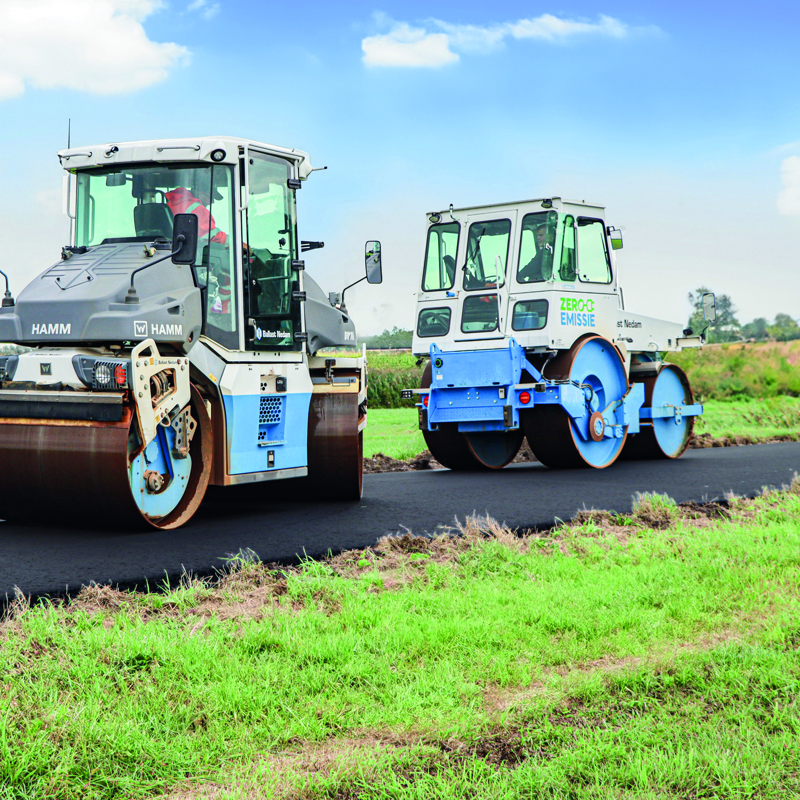
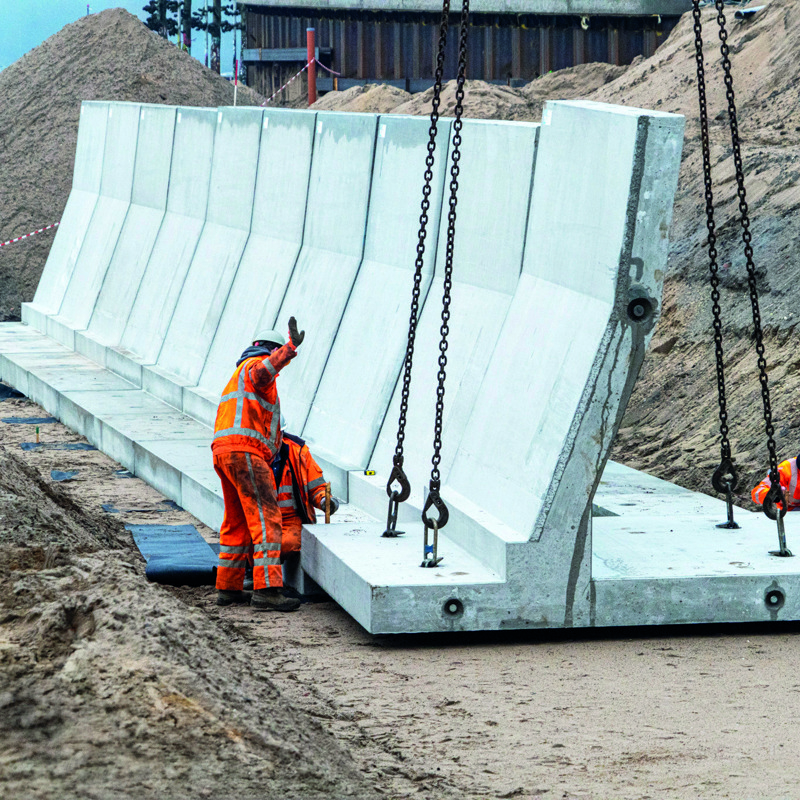
Seizing opportunities
The list of electric equipment purchased in 2024 is long. Jeffrey Hoffmann, director of Ballast Nedam Materieel, takes a moment to go through it. His list: two articulated loaders, two heavy vibratory plates, a telescopic crawler crane, an excavator, a static roller, a tandem roller, battery packs for the construction site, and a hybrid generator with battery pack. ‘Every time we consider a new purchase, we try to develop a viable business case for electric’, says Jeffrey. ‘On average, electric equipment costs three times as much as traditional equipment, so that’s a challenge. But we seize opportunities whenever we can. For example, the A27 project offers the certainty that we can use an excavator for three years. That made it possible to justify the investment in the electric excavator.’
Electric promise
Practical feasibility is also mentioned by Joep Hartjes, who, as director of
Ballast Nedam Regional Infra, uses much of the equipment that Jeffrey purchases. ‘Continuity from assignments creates room for investment. We work a great deal for governments, and they often set sustainability requirements. This positions us to secure contracts without having to offer the lowest price. That was the case, for example, with the framework agreement we signed with the municipality of Utrecht for road markings. In terms of price, we ranked seventh among the bidders, but because we could commit to using electric equipment, we secured the job. A great success. Investments in sustainability thus arise from a combination of customer demand and our own intrinsic motivation.’
Only if you’re sustainable will you continue to play a role in the future.
Emission-free zones
It is precisely this combination that Bramske also emphasises in her efforts to further promote sustainability – and, consequently, investments in electric equipment – within Ballast Nedam. ‘Clients are demanding sustainable solutions and legislation is becoming increasingly strict. If you add up these and other factors, there is only one conclusion possible: only if you’re sustainable will you continue to play a role in the future.’ She immediately adds that shifting government policies occasionally create uncertainty. Consider the emission-free zones that various municipalities have been preparing for years to ensure a clean city center, which the current cabinet actually wanted to abandon. ‘Fortunately, those municipalities stood their ground. Those emission-free zones in the inner cities are now a reality after all. That gives us yet another reason to continue with electric equipment. Otherwise, we will no longer be able to enter those zones.’
Rijnkade: clean and quiet
Speaking of inner cities, along the Rijnkade in Arnhem, Ballast Nedam continued work in 2024 on 1,200 metres of dyke reinforcement and the redevelopment of the quay area, on the edge of the city centre. Bramske: ‘We placed a strong focus on electric equipment there, also at the request of the client. The great thing is that you not only have clean air but also less noise. The construction for this project was entirely emission-free, and the associated transport was nearly emission-free. With this, we saved 1.4 million kilos of CO₂ – a reduction of 99%.’ To put it into perspective: such a reduction is equivalent to no less than 203 laps around the planet by car.
Without smell and noise
Electric equipment helps to bring the sustainability goal of emission-free construction sites within reach and to meet clients’ sustainability requirements. ‘Moreover,’ according to Joep, ‘it is sometimes necessary due to nitrogen emission issues. With equipment that runs on diesel, there is too much pollution and some projects simply cannot proceed. Electric equipment is the solution.’
Jeffrey also thinks electric equipment is something to be proud of. ‘In 2024, we started using an electric lorry combination with a lorry-mounted crane at Ballast Nedam Materieel, in collaboration with transport company St vd Brink. This is completely emission-free and can therefore enter all environmental zones of municipalities. Furthermore, it is the first of its kind in Europe – truly something to be proud of. There is also extra benefit for our team. A driver told me that he is very happy with this new crane lorry because he can give verbal instructions on the construction site without the smell and noise of a running diesel engine.’
No other course
The year 2024 delivered great results in terms of investments in and the use of electric equipment. ‘Where it is realistic and practically feasible, we should definitely continue’, says Joep. Jeffrey agrees, also because he ‘doesn’t want to leave the planet in a bad state for his children’. However, like Bramske, he points out that political developments can influence the extent to which clients demand sustainable solutions. ‘That can make it more difficult for us to develop sufficiently solid business cases.’ But Bramske is clear: ‘As Ballast Nedam, we want to continue to commit ourselves to sustainability. In that regard, I also find the interest of our parent company, Rönesans Holding, very encouraging. In their home market of Turkey, they too aim for emission-free construction sites and want to learn how to develop business cases for electric equipment. We have been building up that expertise and experience for years now and can therefore support them in this. That is why we cannot and will not take a different course. We believe in this and wholeheartedly embrace our social responsibility.’
De Bruyn Transport invests, Ballast Nedam guarantees
Ballast Nedam guarantees De Bruyn Transport an annual usage of 1,800 hours of electric equipment for seven years. ‘This has allowed us to purchase electric equipment’, says director Joeri de Bruyn. ‘Because for such investments, you need partners. For us, Ballast Nedam was the first to stick their necks out with us.’
As part of the agreement, De Bruyn purchased five electric vehicles (lorries/trailers/tractors), one in Ballast Nedam’s colours. In 2024, these vehicles could be seen on the Princess Amaliahaven, the Blankenburg connection and various smaller projects. In total, the vehicles prevented the emission of 99.08 tonnes of CO2.
Cooperation, trust, willingness
In the meantime, De Bruyn Transport has made similar agreements with several clients. The company now has sixteen electric lorries, with six more on the way. ‘We have built up an entire fleet. So if Ballast Nedam wants to execute a large-scale, emission-free project, we can easily pull ten electric lorries out of the pool.’ However, it is clear that this transition is not only technical in nature. It also challenges people to adapt, from drivers to project managers. This requires cooperation, trust and a willingness to learn and grow together. ‘We see this transition as a unique opportunity to strengthen both our company and sector, and to take concrete steps together with partners such as Ballast Nedam towards emission-free construction sites by 2030.’
